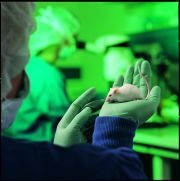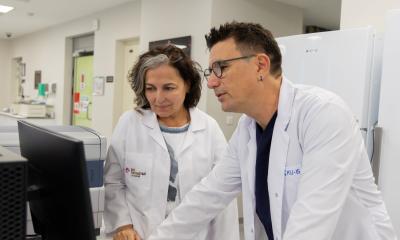Healthy or diseased?
The ratio between the concentrations of metabolites may give the answer to the question. Researchers at the Helmholtz Zentrum in Munich demonstrated the proof of principle. They identified diabetic or healthy mice by biomarkers they analyzed only by bioinformatics. Metabolomics might permit a promising tool for pre-clinical investigation of effects and side effects of new drugs, they say.

Metabolomics aims to determine the totality of all small molecules of a cell or a tissue. The exponents of bioinformatics analyzed data collected in the framework of a pre-clinical metabolomics study in healthy and diabetic mice. In each case, a subgroup of the animals was treated with the diabetes drug RoziglitazoneTM. Then, more than 800 metabolites were quantitatively determined in a blood plasma sample of a total of forty mice, representing the factors "healthy/diabetic" and "treated/untreated".
Karsten Suhre, who led the work at the Helmholtz Zentrum München, explains the results: "It transpired that in many cases the ratios between the concentrations of certain metabolites were much more informative than their absolute concentrations." By a subsequent clustering of the test statistics of such metabolite pairs, it is possible to identify groups of metabolites which discriminate the animals by the factors "healthy/diabetic" or "treated/untreated".
The present results show that diabetes-biomarkers can be identified by means of an objective bioinformatics analysis of complex metabolomics data obtained in high-throughput experiments. Suhre added: "This bioinformatics approach can be used, in conjunction with the new metabolomics technology platform (metaP) at the Helmholtz Zentrum munich, for the automatic identification of groups of relevant biomarkers of disease. Additionally, with the pre-clinical investigation of the effect of new drugs, metabolomics permits for the early identification of possible side effects on the metabolism.
Hitherto, genetic methods and/or transcription analyses stood rather to the fore in the investigation of metabolic diseases. Now, advances in the area of mass spectroscopy allow for the extensive examination of the metabolome. "With this recent quantum leap in the area of metabolite analysis, the challenge to bioinformatics is to develop customized, numerical evaluation methods to handle the complexity of these high quantity metabolomic data sets", explains Karsten Suhre.
Photo: Helmholtz Zentrum München; Article was adopted from original press release.
11.07.2008










